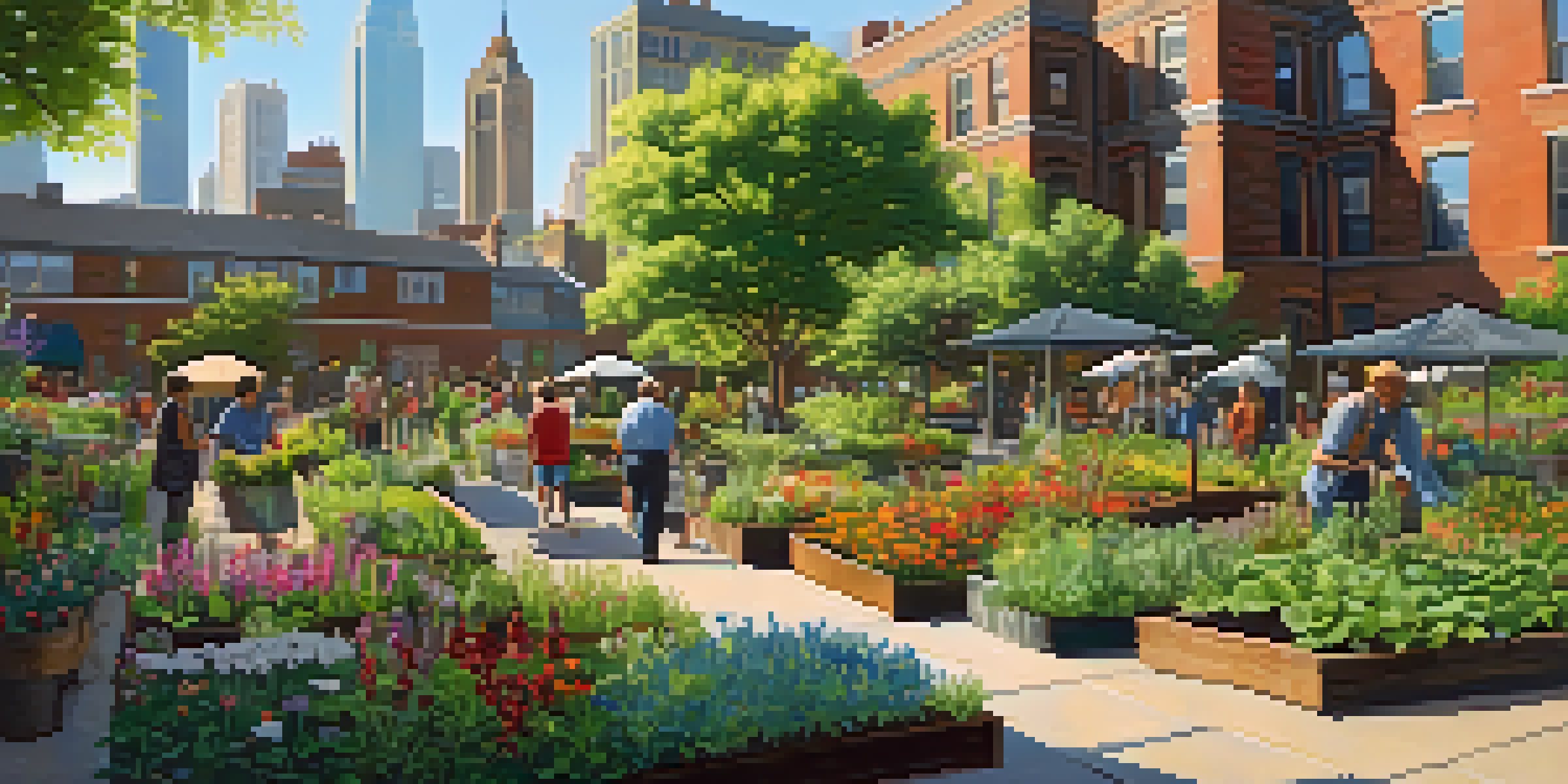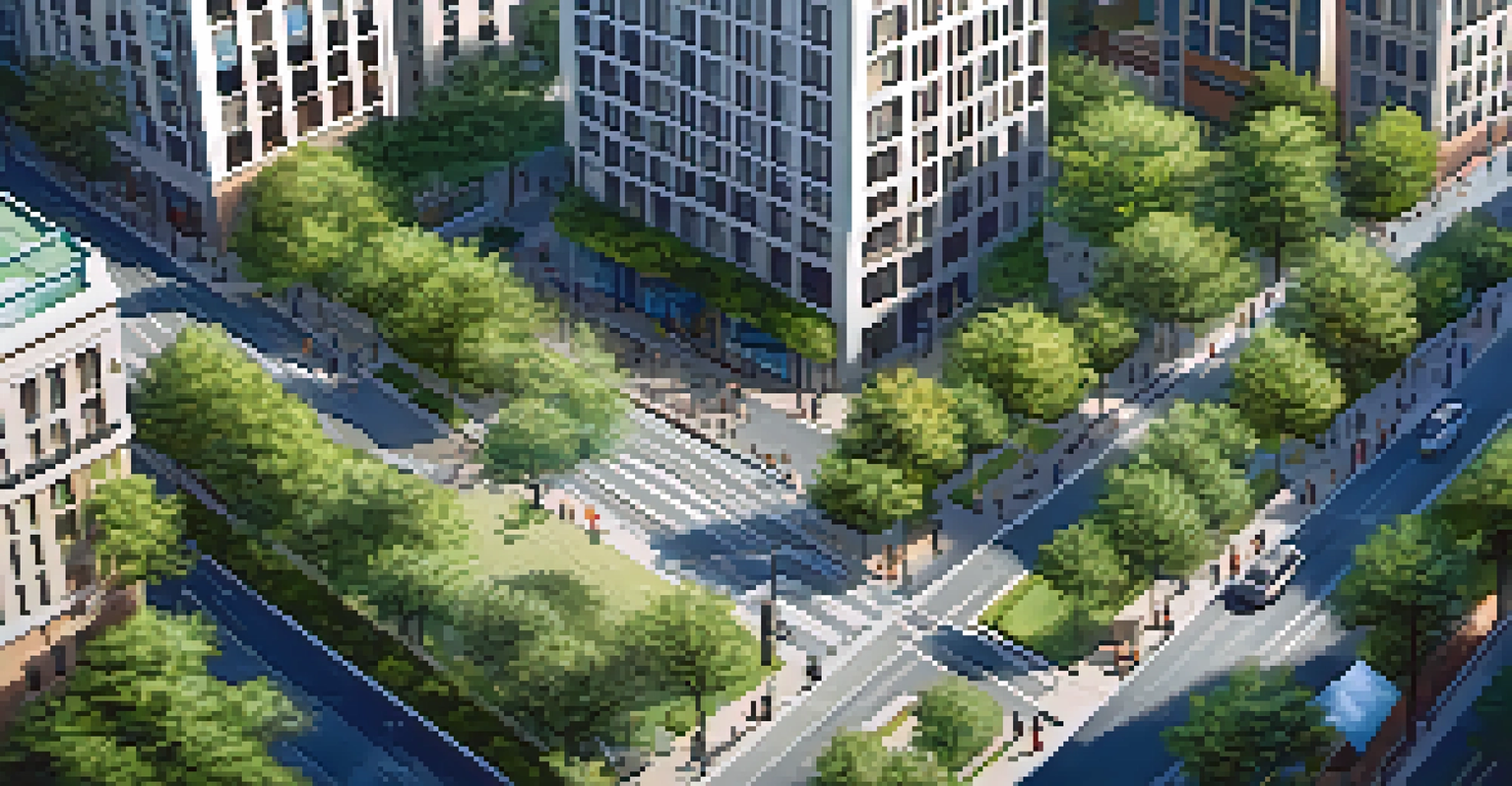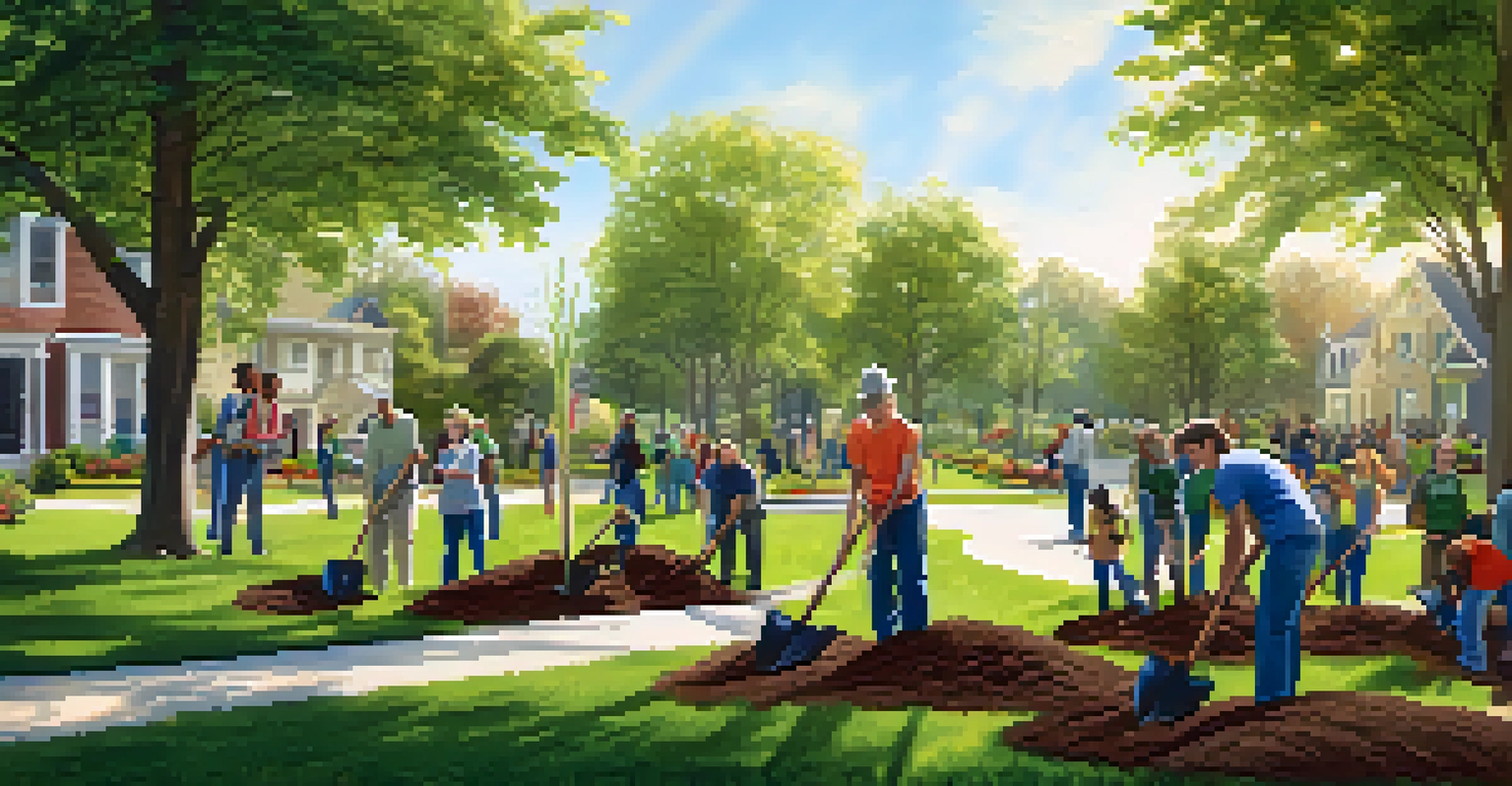Urban Heat Islands: Newark's Fight Against Rising Temperatures

Understanding Urban Heat Islands and Their Impact
Urban heat islands (UHIs) are areas within cities that experience significantly higher temperatures than surrounding rural areas. This phenomenon occurs due to factors like concrete, asphalt, and limited vegetation, which absorb and retain heat. For Newark, the rise in temperatures is not just uncomfortable; it poses serious health risks, especially for vulnerable populations.
The city is not a concrete jungle, it is a human habitat, and we must enhance its livability.
As cities like Newark expand, the increased heat can exacerbate problems such as air pollution and energy consumption. The higher the temperatures, the more energy is required for cooling, leading to increased greenhouse gas emissions. Thus, understanding UHIs is crucial for both environmental and public health.
In Newark, urban planners and community leaders are increasingly aware of these issues. They are seeking sustainable solutions to mitigate the heat and protect residents, particularly as climate change continues to escalate these challenges.
The Role of Green Spaces in Reducing Heat
One effective strategy to combat UHIs is the creation and maintenance of green spaces. Parks, trees, and gardens not only beautify urban areas but also provide shade and cooling effects. In Newark, initiatives to increase green spaces are gaining momentum, fostering community engagement and environmental stewardship.

For instance, community gardens in Newark have become vital spaces for residents, offering both a place to gather and a way to combat heat. Trees planted along streets help lower surface temperatures and improve air quality, making neighborhoods more livable. These green initiatives are essential in reducing the urban heat footprint.
Urban Heat Islands Threaten Health
Urban heat islands (UHIs) in Newark lead to higher temperatures, posing significant health risks, particularly for vulnerable populations.
Moreover, green spaces enhance biodiversity, providing habitats for various species. By investing in parks and greenery, Newark is not only fighting rising temperatures but also improving overall urban resilience and quality of life for its residents.
Innovative Urban Design to Combat Heat
Innovative urban design plays a crucial role in mitigating the effects of UHIs. Newark's city planners are implementing strategies such as cool roofs and reflective pavements that minimize heat absorption. These materials can significantly lower surface temperatures, creating a more comfortable environment for residents.
Green infrastructure can be a powerful tool in combating climate change and improving urban resilience.
Additionally, the city is exploring the concept of 'green roofs'—gardens planted on rooftops that provide insulation and reduce heat. These roofs can help manage stormwater runoff while offering urban wildlife habitats, illustrating how functional design can benefit the ecosystem.
Such design strategies not only address temperature spikes but also enhance the aesthetic appeal of urban areas. By reimagining how spaces are utilized, Newark is paving the way for a cooler, more sustainable future.
Community Involvement in Heat Mitigation Efforts
Community involvement is pivotal in Newark's fight against urban heat islands. Local organizations and residents are working together to promote awareness and action, from planting trees to organizing clean-up events. This grassroots approach empowers residents to take ownership of their environment.
Programs that educate the community about the effects of UHIs and the importance of green spaces are essential. Workshops and events encourage participation and foster a sense of community pride, making the fight against heat a collective effort. Engaging citizens helps build a culture of sustainability that extends beyond individual actions.
Green Spaces Combat Rising Temperatures
Increasing green spaces like parks and community gardens in Newark helps reduce urban heat, improve air quality, and enhance community engagement.
These collaborative efforts also highlight the importance of equity in environmental initiatives. Ensuring that all neighborhoods, especially those most affected by heat, receive attention and resources is crucial for a balanced and effective approach.
The Role of Technology in Monitoring Heat
Technology plays an increasingly vital role in monitoring and managing urban heat islands. Newark has begun using data analytics and smart sensors to track temperature variations across the city. This real-time information helps city officials understand heat patterns and identify critical areas needing intervention.
Mobile applications allow residents to report local heat issues and track their own temperature data, fostering community dialogue around urban heat. By leveraging technology, Newark can create targeted strategies that effectively address localized heat problems.
Furthermore, predictive modeling can help anticipate future heat trends in response to climate change. This proactive approach equips city planners with the tools they need to implement long-term solutions that keep Newark cool and comfortable.
Policy Changes Supporting Urban Cooling Initiatives
Policy changes are fundamental to supporting Newark's urban cooling initiatives. City officials are adopting policies that encourage sustainable building practices and the integration of green infrastructure. These regulations are designed to create a more climate-resilient city while addressing the pressing issue of rising temperatures.
Incentives for developers to include green roofs and energy-efficient designs in new buildings are becoming more common. Such policies not only help reduce heat but also promote economic growth through green jobs. By aligning economic development with environmental sustainability, Newark is setting a powerful precedent for other cities to follow.
Innovative Design Mitigates Heat Effects
Newark's urban planners are adopting innovative design strategies, such as cool roofs and reflective pavements, to minimize heat absorption and create a sustainable environment.
Moreover, zoning laws are being revised to promote the establishment of parks and greenways. These legislative efforts reflect a commitment to prioritizing public health and environmental stewardship in urban planning.
Looking Ahead: Newark's Vision for a Cooler Future
As Newark continues its fight against urban heat islands, the vision for the future is one of resilience and sustainability. The city is committed to ongoing efforts that integrate environmental considerations into all aspects of urban planning. This holistic approach not only addresses current challenges but also prepares for the impacts of climate change.
Community engagement, innovative design, and supportive policies will be crucial as Newark navigates this journey. By fostering collaboration among residents, local organizations, and officials, the city can build a stronger, united front against rising temperatures.

Ultimately, Newark's fight against urban heat islands serves as a model for other cities facing similar challenges. With continued dedication, Newark can pave the way for a cooler, healthier, and more sustainable urban environment.